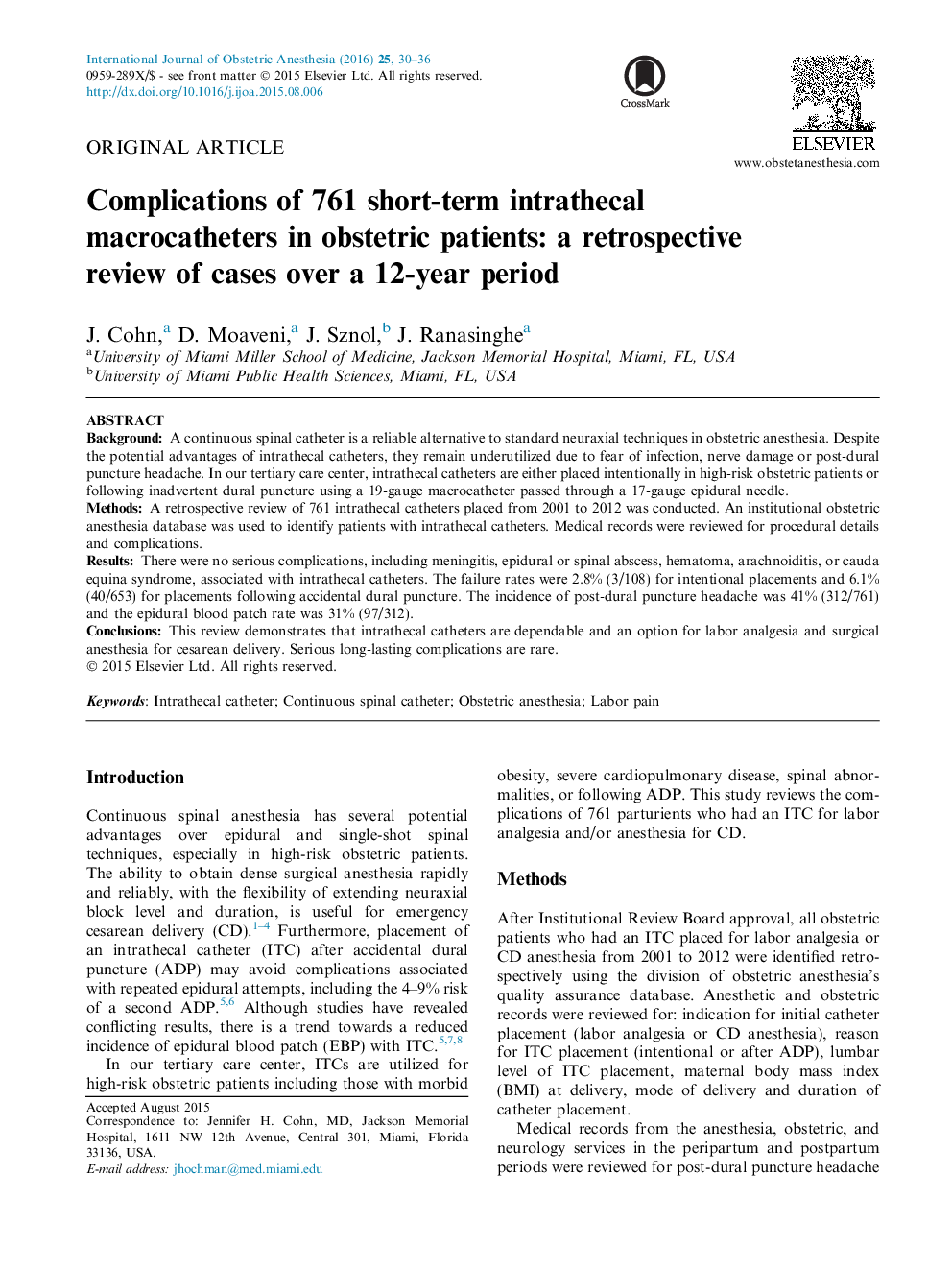| Article ID | Journal | Published Year | Pages | File Type |
|---|---|---|---|---|
| 2757457 | International Journal of Obstetric Anesthesia | 2016 | 7 Pages |
•A short term intrathecal macrocatheter is a reliable neuraxial technique.•Intrathecal macrocatheters are an option for analgesia and anesthesia in parturients.•We report no neurological sequelae in 761 parturients with intrathecal macrocatheters.
BackgroundA continuous spinal catheter is a reliable alternative to standard neuraxial techniques in obstetric anesthesia. Despite the potential advantages of intrathecal catheters, they remain underutilized due to fear of infection, nerve damage or post-dural puncture headache. In our tertiary care center, intrathecal catheters are either placed intentionally in high-risk obstetric patients or following inadvertent dural puncture using a 19-gauge macrocatheter passed through a 17-gauge epidural needle.MethodsA retrospective review of 761 intrathecal catheters placed from 2001 to 2012 was conducted. An institutional obstetric anesthesia database was used to identify patients with intrathecal catheters. Medical records were reviewed for procedural details and complications.ResultsThere were no serious complications, including meningitis, epidural or spinal abscess, hematoma, arachnoiditis, or cauda equina syndrome, associated with intrathecal catheters. The failure rates were 2.8% (3/108) for intentional placements and 6.1% (40/653) for placements following accidental dural puncture. The incidence of post-dural puncture headache was 41% (312/761) and the epidural blood patch rate was 31% (97/312).ConclusionsThis review demonstrates that intrathecal catheters are dependable and an option for labor analgesia and surgical anesthesia for cesarean delivery. Serious long-lasting complications are rare.
